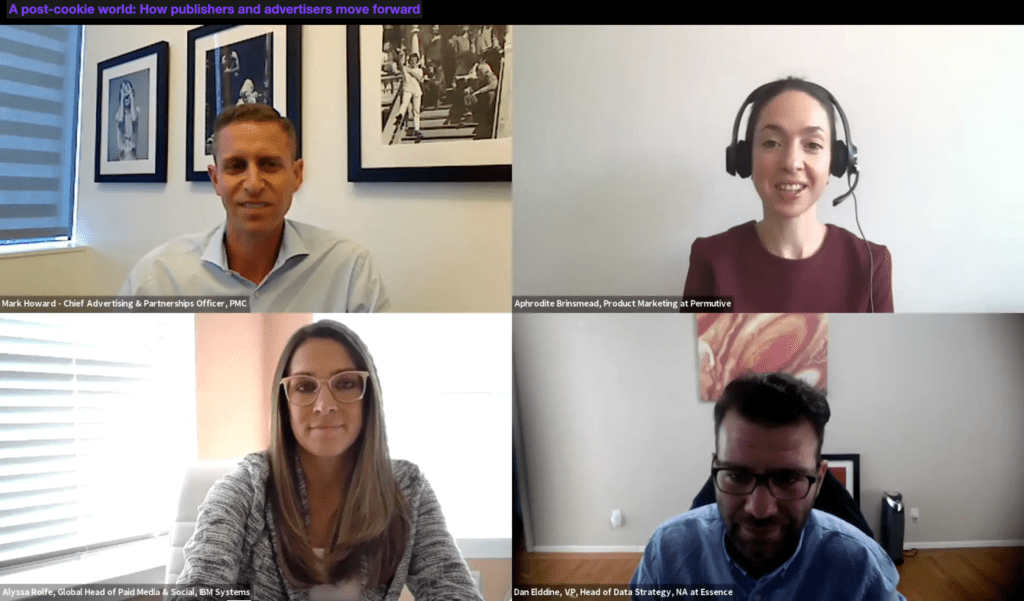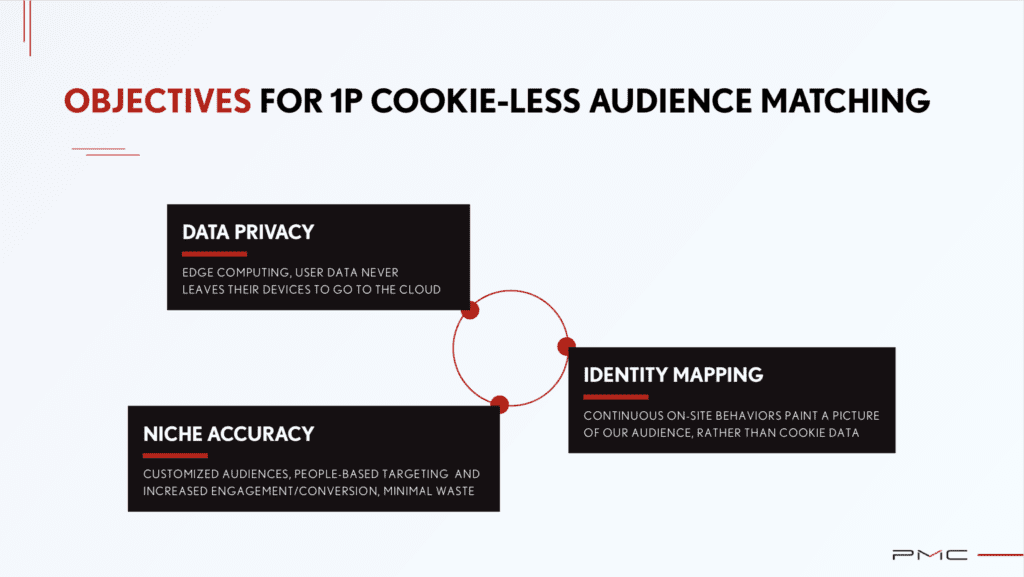|
Getting your Trinity Audio player ready...
|
Publishers embracing first-party data are already seeing revenue lifts. And closer relationships with advertisers are the key to improving this initial success, once third-party cookies are defunct.
In a recent webinar, part of the Make Possible event series, Mark Howard, Chief Advertising and Partnerships Officer at Penske Media Corporation (PMC), discussed how the publisher has launched a “First Party Studio”. The publisher, which has titles such as Rolling Stone, Billboard and Variety, has already seen a 20% year-on-year increase in CPMs. This has been made possible by using first-party data to build more than 530 highly defined customer segments.
Howard was joined by three panelists on the webinar, Alyssa Rolfe, Global Head of Paid Media and Social Marketing at IBM; Dan Elddine, VP, Head of Data at digital advertising agency, Essence; and Aphrodite Brinsmead, Product Marketing at PMC’s technology provider Permutive. The group agreed that despite early success, this is only the beginning of the new world of advertising. As third-party cookies disappear, advertisers will be increasingly keen to partner with large publishers. Advertisers need to find new ways to target and identify key customer audiences and publisher first-party data and audience insights will be essential.

Publishers are still developing their first-party data strategies
To gather more first-party data from readers and viewers, PMC uses a mixture of paid subscriptions, log-ins, polls, surveys, events, newsletters and different memberships. Howard revealed that Rolling Stone magazine has launched a new subscription section that covers industry news. Despite being a B2C site, the title has a valuable audience of music industry executives who are willing to pay for access to top quality industry news.
Despite this early innovation around first-party data, Howard was honest in sharing that less than 10% of PMC’s audience across different brands are authenticated users. This matches half the webinar audience who showed, through a live poll, that they only recognise 10% or less of their audience. Publishers are just starting out thinking about how they can increase their authenticated traffic but as Howard advised, it pays to lay the groundwork now.
“This first-party data strategy is really just in its early stages,” he said. “We know that there’s a long runway to go here until the deprecation of cookies. But we believe that by having a strong foundation now and really understanding the audiences – by adding a lot of this survey data to the anonymous user data that we have based off of people coming to the site -creates a great opportunity.
“We’re also starting to have really great conversations with people about second party data relationships and what clean rooms look like and how we can bring our data and their data together to create even more powerful solutions.”

Brands are excited to work with publishers and learn about their audiences
IBM’s Rolfe believes that life will be very different without third-party cookies tracking users across sites. She also agrees that the move to a first-party data world has the potential to strengthen relationships between advertisers and publishers.
“The shift away from third-party cookies really puts pressure on the industry to think differently and to get innovative,” she said.
“Publishers can become a treasure trove of data if they can figure out how to authenticate their users, learn about who they are and what they’re doing on their website. There are so many opportunities for brands and publishers to work together to build curated audiences.
“If we can’t use third-party cookies, when we’re buying our media directly to target our audience, then chances are, we’re going to have to go and work with the publisher to build it. I’m guessing that it’s going to end up being even more effective because we’re learning more about our users and what they’re doing, versus relying on cookies.”
Insights from publishers will help brands understand user journeys across the sales funnel
This partnership with publishers will be particularly useful for brands who fear the loss of tracking cookies’ impact on the sales funnel, according to Elddine from Essence.
He thinks many brands fear that, as tracking cookies disappear, it will be hard to follow prospects’ progress through their sales funnels. Typically, a customer will move from awareness to consideration before purchasing, and, without third-party data it will be difficult to understand user behavior before a purchase.
Publisher first-party data will help brands keep visibility of their sales pipeline, particularly as people near conversion.
“The loss of being able to connect the dots in the lower funnel becomes more challenging,” he said.
“I think that’s an interesting opportunity to get closer with publishers to talk about how to create this connective tissue to be able to share audience data and insights, to be able to use survey tools to validate some of the reach and exposure numbers that we’re seeing and do so against known audiences is super important.”
Mark Howard agreed that PMC sees first-party data as a way for publishers and advertisers to work more closely together and that, he concluded, is “a win for everybody”.
If you would like to watch the event on-demand or view Mark Howards’ presentation slides, please click here.



